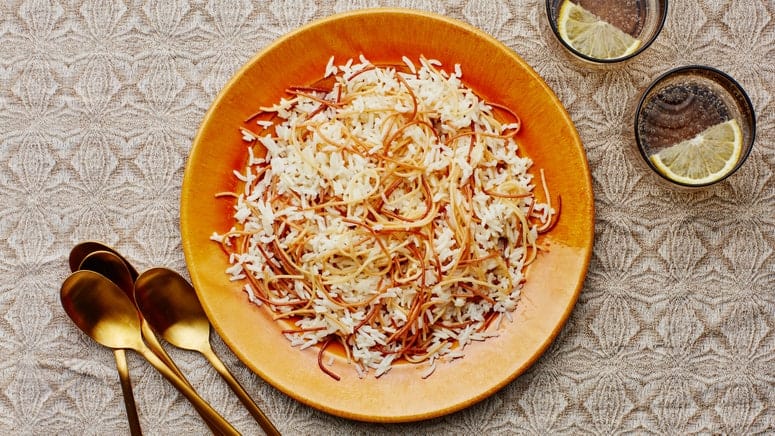Of course, this technique is not only used for Mexican fideos or arroz rojo. Browning dry grains in oil is seen in traditional cuisines around the world, from Spanish-style fideos to Palestinian maqluba to pilafs made in Armenian, Syrian, and Lebanese communities. The origin of the method is disputed: Some scholars believe it originated in India, while some argue it came about in Iran around the 10th century. Either way the technique is beloved in numerous cultures for creating distinct, nonsticky grains, so you can and should toast grains and pastas outside of these iconic cultural recipes too. Toast whole grains like farro, or apply the technique to any one-pot pasta recipe where the dry pasta cooks in a liquid sauce. (If a recipe calls for long noodles, just break them in half so they can lay flat across the bottom of your pan.) For extra depth of flavor and a fantastic al dente texture, try toasting the pasta for homemade hamburger helper or noodle soups like this Brothy Pasta with Chickpeas before adding any liquid ingredients.
If you want to try toasting rice, this basic arroz rojo recipe is a good place to start:
Begin with 2 Tbsp. neutral oil, heated until shimmering over medium-high. Once the oil is hot, add 2 cups jasmine rice, stirring almost constantly, until the grains have turned translucent and some of them have begun to take on a light golden brown color, about 5–6 minutes. Don’t be tempted to turn up the heat or skimp on the browning—you want your starches to be browned but not burnt to get that deep nutty flavor.
Add in finely chopped onion, garlic, or other vegetables (uncooked peas, finely diced carrots, or corn kernels work well) and sauté for an additional 2 minutes, until the vegetables just begin to soften. Next, add ½–¾ cup tomato sauce, diced tomatoes, or El Pato sauce (Mexican spicy tomato sauce) and stir to combine. Add 2 cups chicken broth or 2 cups water plus chicken bouillon, and stir, allowing the liquid to come to a boil. Cover your pot with a lid, turn heat to low, then just let your rice simmer for 15–18 minutes, until fully cooked, to absorb all the flavor of the liquid.
This recipe works for both arroz rojo and fideo (just sub rice for cut spaghetti or small shells), but you can absolutely riff on the sauces and aromatics to create something completely different. From browning couscous and adding harissa, onions, and garlic to cooking toasted rice with sambal and soy sauce, the flavor combinations are endless, and the extra step of toasting your grains will add a depth of flavor you didn’t know was missing.
Or try pilaf!
Jae Taurina Thomas is a Mexican and Thai food and culture writer based in NYC. You’ll find her cooking beans and waiting patiently for a Tapatío sponsorship.




